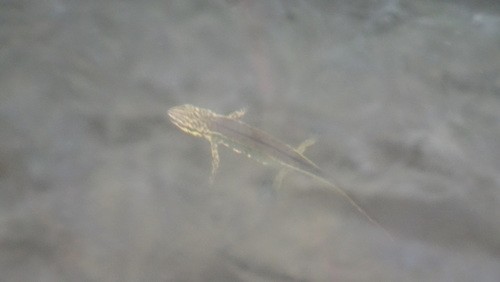Palmate newt
A species of Lissotriton Scientific name : Lissotriton helveticus Genus : Lissotriton
Palmate newt, A species of Lissotriton
Scientific name: Lissotriton helveticus
Genus: Lissotriton
Content
Description General Info
 Photo By shabrobtilus , used under CC-BY-NC-4.0 /Cropped and compressed from original
Photo By shabrobtilus , used under CC-BY-NC-4.0 /Cropped and compressed from original Description
The palmate newt (Lissotriton helveticus) is a species of newt found in most of Western Europe, including Great Britain. It is protected by law in all countries where it occurs, and is thought to be extremely rare to endangered in the Netherlands, Belgium, and Luxembourg, and vulnerable in Spain and Poland, but common elsewhere.
General Info
Lifespan
6-8 years
Diet
Palmate newt, often found in freshwater environments, primarily consume small aquatic invertebrates. Their diet prominently includes crustaceans, insect larvae, worms, and occasionally detritus, demonstrating carnivorous and detritivore tendencies.
Appearance
Palmate newt is a small amphibian with a slender, smooth-skinned body. Its coloration varies from olive-green to brownish-grey, often with dark spots and streaks. The belly is typically lighter, tinged with yellow or orange. Males develop rough patches on their inner thighs during the breeding season. This species has a long, thin tail, and its hind legs, developed for swimming, are larger than the front ones.
Behavior
Palmate newt is primarily terrestrial, with a predominantly nocturnal activity pattern, although it may also be diurnal during overcast or rainy days. It exhibits a solitary behavior, prizing privacy, and typically forages alone. Males may become temporarily territorial during mating season, but generally, the species shows little aggression.
Population
Decreasing
Scientific Classification
Phylum
Chordates Class
Amphibians Order
Salamanders Family
True salamanders Genus
Lissotriton Species
Palmate newt